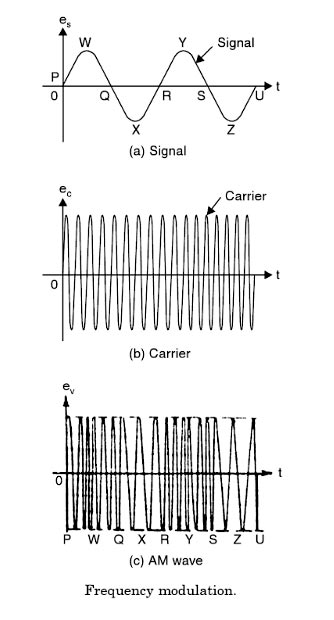In frequency modulation
Right Answer is:
Amplitude of carrier wave remains the same
SOLUTION
Frequency Modulation (FM)
The process by which the frequency of a carrier wave is varied in accordance with the modulating signal is called frequency modulation. The process of frequency modulation is shown graphically in Fig
The three waves shown in the figure are:
- Signal
- Carrier
- The resultant frequency-modulated wave.
When a signal of frequency fs is modulated with the carrier wave of frequency fC, a resultant modulated wave is produced. When a sinusoidal carrier is frequency-modulated, its instantaneous frequency is varied in accordance with the characteristics of the modulating signal. When the modulating signal is also sinusoidal, the frequency of the modulated carrier wave will vary sinusoidally.

The figure illustrates the effect of frequency modulation. The carrier wave has its highest frequency when the modulating waveform is at its maximum amplitude and has its lowest frequency when the modulating waveform is at its minimum value. When the modulation has zero amplitude the carrier wave is at its resting frequency. In between these values, the frequency of the carrier wave increases or decreases by an amount proportional to the amplitude of the modulating wave. The amount by which the carrier frequency changes from its resting frequency is called the frequency deviation.
The following points are worth noting:
(i) The amplitude of the modulated wave is the same as that of the carrier wave.
(ii) The frequency of the modulated wave varies in accordance with the message signal.
Advantages:
1. Better audio quality.
2. High transmission efficiency.
3. Noiseless reception.
Limitations:
1. A smaller area of reception.
2. The wider channel is needed.
3. Equipment used is more complex and costly.
